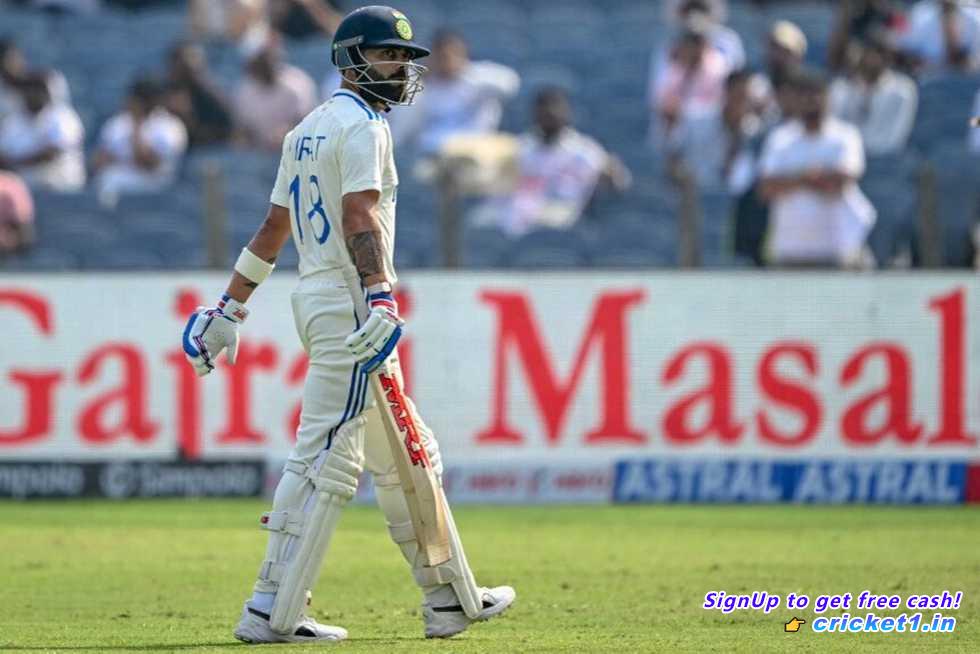
In an unfolding narrative reminiscent of past struggles, India finds itself on the brink of its first home series defeat in Test cricket in 12 years. The culprit? Left-arm spin—an old adversary that once again proved to be a stumbling block for the Indian team. As the second Test in Pune continues, Mitchell Santner of New Zealand emerged as a key performer, shedding light on vulnerabilities that have sporadically marred India’s performances.
The battle between India and the left-arm spinners on the Pune pitch, characterized by its black soil composition, has mirrored previous challenges faced by the team on similar surfaces. Such pitches offer turn from a good length, and when the ball turns unpredictably, even straighter deliveries threaten the stumps, creating a perfect storm of sorts. In recent years, India has conceded significant five-wicket hauls to left-arm spinners including Ajaz Patel, Matthew Kuhnemann, Tom Hartley, and now Santner, adding another chapter to this ongoing saga.
With the ball turning consistently and unpredictably, the threat posed by left-arm spinners is amplified, and India has struggled to counter it. Players like Virat Kohli and Shubman Gill exemplify this struggle. During this Test, Kohli, attempting to tackle Santner’s spin with an open stance, found himself undone by a delivery that almost turned into a full toss. Gill, preceding Kohli, had been trapped LBW by the same spinner after narrowly escaping a similar fate due to an umpires’ call. This marked the 10th instance of Gill and Kohli succumbing to left-arm spin in Asia over the last three years.
Recognizing the persistent threat, the Indian team management aimed to address these shortfalls innovatively. Their approach included strengthening the lineup with left-handed batsmen and elevating Rishabh Pant to the number five slot with hopes of neutralizing left-arm spin challenges. This strategy began to bear fruit, with players like Yashasvi Jaiswal, Pant, and Ravindra Jadeja achieving commendable averages of over 75 against this type of bowling in the last three years. Meanwhile, batsmen like KL Rahul and Sarfaraz Khan attempted to bridge the gaps, averaging close to 45. However, despite these adjustments, the match played out like a perfect storm against India’s batting lineup.
Following the dismissals of Gill and Kohli, Sarfaraz Khan soon followed suit, succumbing to the pressure and lofting Santner to mid-off. New Zealand astutely introduced Glenn Phillips’ off-spin to further compound the woes of India’s left-handers.
. This strategy paid dividends as Jaiswal was caught at slip, and Pant was bowled by a skidding delivery, showcasing that match-ups, while not traditionally associated with Test cricket, are slowly finding a place in the format.
Mitchell Santner, primarily known for his prowess in T20 cricket, used this encounter to deploy skills honed from the shorter format. Adapting certain T20 strategies, Santner’s varied pace delivered key breakthroughs. His deliveries ranged from mid-70kph when facing tail-enders like Jasprit Bumrah and Akash Deep, to nearly 90kph for important wickets like those of Jadeja and Ashwin. Santner also artfully used wide angles to his advantage, exemplified in the dismissals of Kohli and Bumrah.
Reflecting on his success, Santner acknowledged the influence of T20 tactics in his bowling. “In white-ball cricket, it’s about changing pace frequently. With the pitch offering bounce with certain deliveries, it was a strategic decision to slow down occasionally. The plan was to keep the batsmen guessing, much like in T20s,” stated Santner. He credited fellow T20 specialist Washington Sundar, noting how variations in pace were integral to their game plan, especially in foreign conditions.
Rangana Herath, serving as New Zealand’s spin bowling consultant, lent his expertise. Santner quoted Herath’s mastery of pace and angle variation as instrumental, saying, “Herath has honed the art of changing seam angles, which has proven crucial on subcontinent pitches like Pune.”
Despite India’s attempts to counter left-arm spin with both traditional and innovative methods, the results speak for themselves. The Indian duo of Kohli and Gill, anchored in defense, found themselves shackled, unable to rotate the strike effectively. Their struggles remind one of the vital partnerships New Zealand’s top-order stitched, which stood in stark contrast to India’s flickering effort.
Morne Morkel, India’s bowling coach, acknowledged New Zealand’s dominance: “They’re capitalizing on our weaknesses, not just with ruthless bowling but also by putting our bowlers under pressure with precise sweeping and reverse sweeping.”
As India stares at a daunting chase of over 300 in the fourth innings—a feat accomplished only once before in the country’s Test history—questions arise regarding their susceptibility to left-arm spin. With tough internal reviews looming, India braces for what could potentially be a rare and introspective series loss at home.

